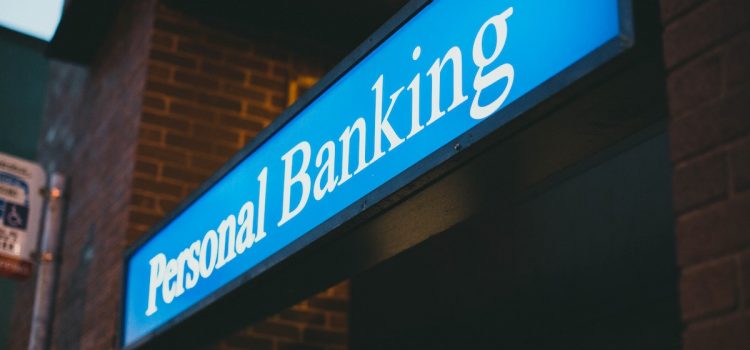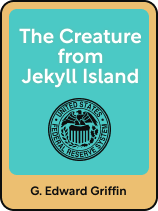

This article is an excerpt from the Shortform book guide to "The Creature from Jekyll Island" by G. Edward Griffin. Shortform has the world's best summaries and analyses of books you should be reading.
Like this article? Sign up for a free trial here.
What’s fractional reserve lending? Is it ethical?
Edward Griffin asserts that the Federal Reserve facilitates and legalizes fraud by allowing banks to engage in fractional reserve lending. He explains what the practice is and argues that it’s not ethical.
Read more to understand this prolific banking practice.
Fractional Reserve Lending
Fractional reserve lending is when a bank keeps only a fraction of its depositors’ money on hand and loans out the rest. Fractional reserve lending is profitable because it allows the bank to loan out more money and charge interest on it.
But fractional reserve lending is also akin to bluffing: The bank is gambling on the likelihood that only a fraction of its depositors will want to withdraw their money before the loan is repaid and that this fraction will be no larger than the fraction of their money that the bank kept on hand. Griffin argues that fractional reserve lending is fraudulent because the bank is essentially loaning out money it doesn’t have, making it look like the money is in two places at once.
For example, suppose 100 people each deposit $1,000 in checking accounts at a given bank, so the bank has $100,000 in total deposits. The bank lends out $80,000 to someone, who uses it to purchase something. Suppose the person she purchased it from then deposits the $80,000 in his checking account at the bank. That increases the bank’s total deposits to $180,000, but $80,000 of that is being double-counted because the bank owes it to both its original depositors and the new depositor.
At this point, the bank only has the $100,000 it started with, but if all its depositors tried to withdraw their funds, the bank would be obliged to pay out $180,000. Once the loan recipient pays off the loan ($80,000 plus interest) the bank will have enough money to meet all its obligations, but until then, it’s just gambling that it won’t need to pay out more money than it has.
Griffin explains that, to avoid this problem, banks would have to inform their depositors that their funds are not available for withdrawal for a period of time while the money is out on loan. If the money isn’t available for withdrawal until it’s repaid by the loan recipient, then it wouldn’t be double-counted. Banks already do this with term-certificate deposits, where the depositor agrees to commit the funds for a set period of time, and the funds are only available for withdrawal when the term ends. But they also lend out funds from accounts you can withdraw money from at any time, such as a checking account, leading to double-counting as we’ve seen.
And, as Griffin points out, the Federal Reserve presides over all the double-counting of money because the Fed dictates what fraction of depositors’ money banks are required to keep on hand. According to Griffin, by setting the required reserve ratio to anything less than 100% for demand accounts, the Fed is condoning, legalizing, and facilitating a fraudulent practice.
(Shortform note: At the time Griffin wrote The Creature from Jekyll Island, the required reserve ratio was 10%. As of 2020, the Fed reduced it to 0%. Griffin would likely see this as a deliberate removal of one of the last vestiges of restraint on fractional reserve lending.)
| The Ethical Controversy Over Fractional Reserve Lending Not everyone shares Griffin’s perspective that fractional reserve lending constitutes fraud. The mainstream perspective among economists, as expressed by Thomas Sowell in Basic Economics, is that fractional reserve lending is a legitimate banking practice that allows for more efficient use of funds in the economy. After all, not all of a bank’s depositors are going to need to withdraw all their funds at once, so fractional reserve lending allows these otherwise unused funds to be put to use. Businesses benefit from the greater availability of loans, which enables them to operate on a larger scale, benefiting the economy. Banks profit from the interest on the loans and pass on a fraction of the interest to their depositors. So, everybody wins with fractional reserve lending. How can it be fraud if all the involved parties benefit from it? Griffin would likely answer that these benefits are outweighed by the harm that fractional reserve lending causes. We’ll discuss the ways that he believes fractional reserve lending harms the economy later in this guide. |

———End of Preview———
Like what you just read? Read the rest of the world's best book summary and analysis of G. Edward Griffin's "The Creature from Jekyll Island" at Shortform.
Here's what you'll find in our full The Creature from Jekyll Island summary:
- How the Federal Reserve System destabilizes the economy
- Why banks are encouraged to engage in fraudulent practices that harm the public
- How the Federal Reserve can be abolished






